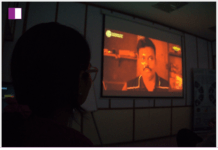In today’s digital age, the landscape of marketing is constantly evolving, with new trends and technologies reshaping the way brands connect with consumers. Richa Parekh, a seasoned professional in digital marketing, sheds light on the paradigm shift brought about by the rise of streaming platforms and connected TV (CTV) in her insightful LinkedIn post.
Streaming has undeniably overtaken traditional TV viewership on a global scale, a fact that doesn’t come as a surprise. With the increasing affordability of smart TVs and the diverse content offerings of over-the-top (OTT) platforms, consumers are spoilt for choice like never before.
In India alone, CTV households are projected to reach a staggering 100 million, with ad spends on CTV expected to soar to $400 million by 2027, growing at an impressive CAGR of 45%. These statistics underscore the growing significance of CTV in the realm of digital marketing and advertising.
However, Richa Parekh delves deeper into the global trends shaping the landscape of streaming and CTV. She highlights key insights from the dentsu e4m Digital Advertising Report 2024, revealing that, on average, consumers subscribe to three streaming services. Additionally, around 10% of consumers are ‘subscription hoppers’, constantly reassessing their subscription choices.
What’s more, a staggering 93% of viewers are reconsidering their subscription options, indicating a dynamic and ever-changing market. Interestingly, a significant portion of viewers, approximately 56%, engage in multi-tasking behavior, using a second screen while streaming content.
Richa Parekh emphasizes that, contrary to popular belief, cost often outweighs content when it comes to choosing streaming platforms. In fact, 42% of viewers prioritize cost over content, and 37% are willing to switch to a cheaper, ad-supported option.
These insights from the dentsu e4m Digital Advertising Report 2024 lead us to critical conclusions about the future of digital marketing and advertising in the era of streaming and CTV.
For OTT providers, Richa Parekh underscores the importance of differentiation beyond content. As the number of CTV users continues to rise, OTT platforms must offer ad-free options, competitive pricing, captivating features, and effective user lifecycle management to stand out in a crowded market.
For advertisers, the rise of CTV presents both opportunities and challenges. While CTV allows marketers to track campaign impact and understand the halo effect of TV advertising on marketing efforts, challenges such as costs, creative strategies, and mastering the medium remain pertinent.
In essence, Richa Parekh suggests that CTV’s journey towards becoming a stable advertising channel is just beginning. As the digital advertising space continues to evolve, innovative developments in CTV advertising are anticipated, presenting new opportunities for brands and marketers to engage with their audiences in meaningful ways.
Richa Parekh’s insights offer a comprehensive understanding of the shifting landscape of digital marketing and advertising, providing valuable guidance for industry professionals navigating this dynamic terrain. As brands and marketers adapt to the evolving preferences and behaviors of consumers, the role of CTV in the digital advertising ecosystem is poised to become increasingly prominent, shaping the future of marketing in the digital age.




































